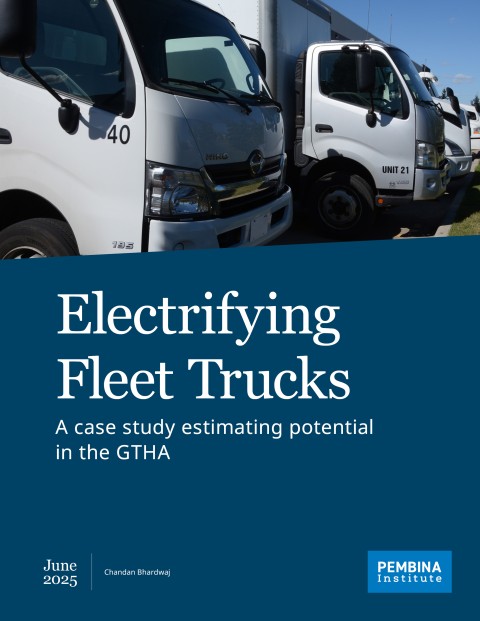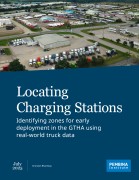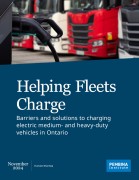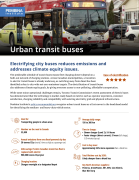Electrifying medium- and heavy-duty vehicles (MHDVs) — trucks and vans — in Ontario offers a major opportunity to save businesses money on fuel and maintenance, cut pollution and re-energize the province’s automotive sector. If Ontario develops supportive policies and makes the right investments, it can unlock these benefits and position itself as a leader in zero-emission freight.
Governments across the globe are setting bold targets to phase out diesel trucks in favour of zero-emission alternatives. In Canada, British Columbia and Quebec are aiming for 35% of new MHDV sales to be electric by 2030, and nearly 100% by 2040. Ontario, by contrast, has not set sales targets for zero-emission trucks. The provinces Driving Prosperity plan highlights electrification as a key part of its automotive strategy, but it stops short of committing to specific goals for MHDVs.
Electrifying Fleet Trucks examines how ready the Greater Toronto and Hamilton Area (GTHA) is to make the switch. Using real-world truck data, we analyzed travel patterns, charging opportunities and how electrification can roll out across three timeframes: short-term (to 2027), medium-term (2028-2034) and long-term (beyond 2035).
Existing battery-electric trucks can already meet the daily driving range needs of a significant share of trucks in the region — even in winter. Within the next two to three years, the following share of the current fleet could be electrified using existing technology:
- 35% of Class 3 and 20% of Class 4
- 20% of Class 5 and 15% of Class 6
- 10% of Class 7 and 8
These shares rise to over 50% by the early 2030s if charger deployment continues to grow at more than 20% per year, following recent trends in public charging expansion.
Importantly, our analysis found that the GTHA can achieve over 30% zero-emission new MHDV sales by 2030, aligning with targets in British Columbia and Quebec, and supporting the City of Toronto’s goal for 30% of all registered vehicles to be electric by 2030. This objective can be reached through a staggered approach by truck class, focusing first on accelerating the adoption of zero-emission Class 3 and 4 trucks. Achieving 50% sales in these lighter classes by 2030 could offset lower targets (<10%) in the heavier Class 5 to 8 trucks.
Local truck travel behaviour varies by city, making tailored, data-driven strategies essential. But one thing is clear: Ontario is well-positioned to lead if it accelerates investments and implementation now.
To learn more, scroll to the top of the page to review the key findings or download the full report.




